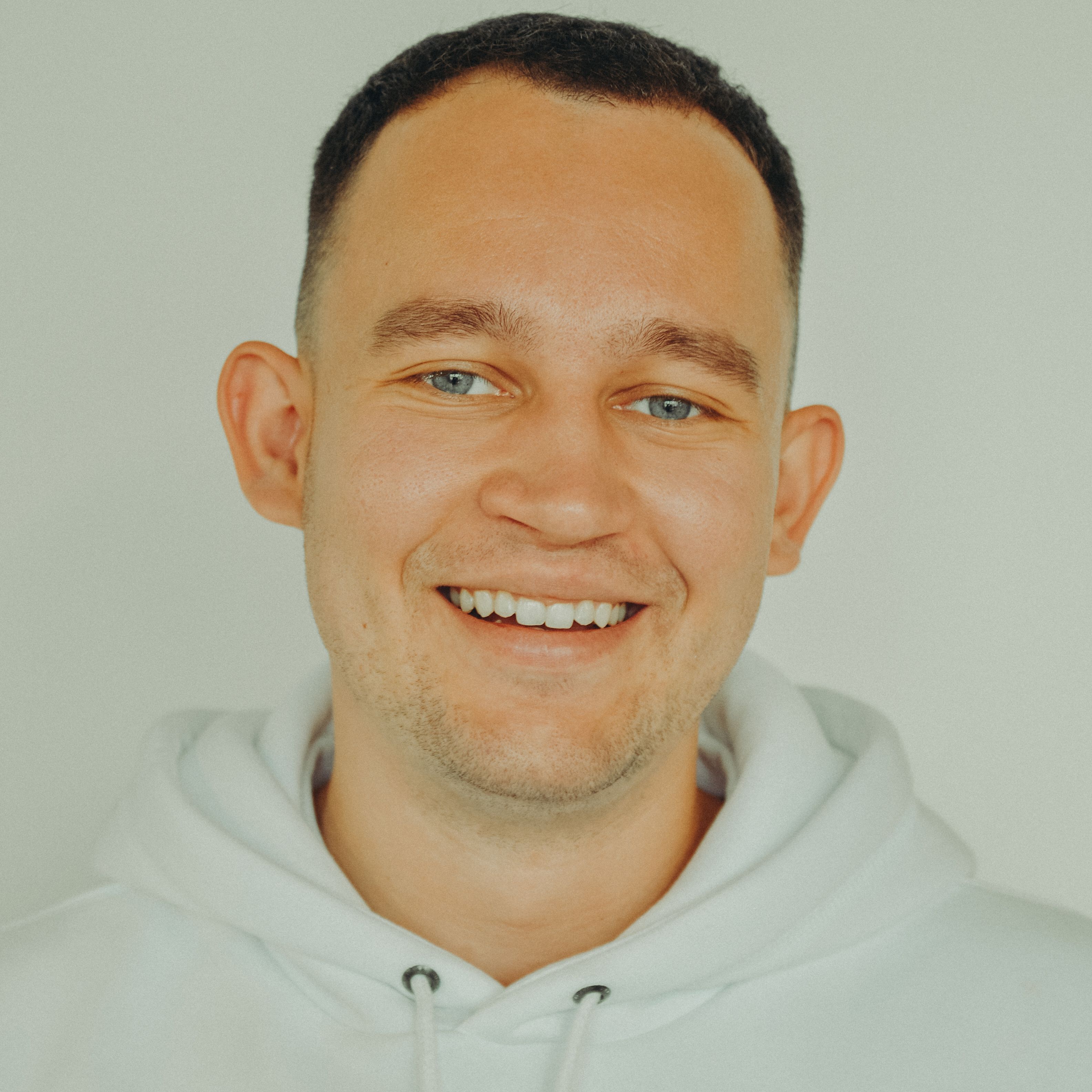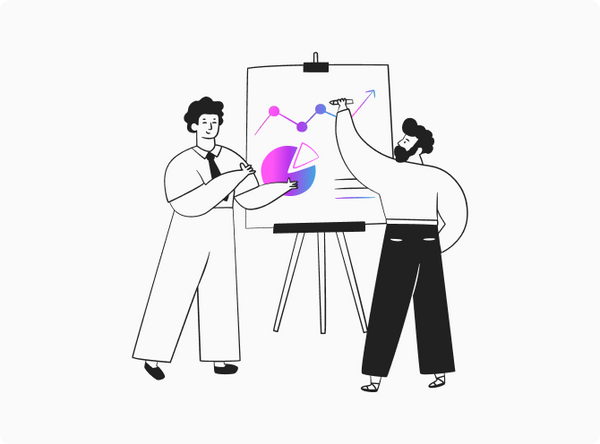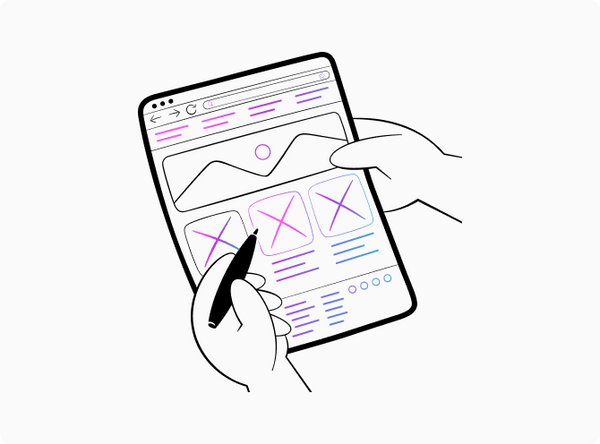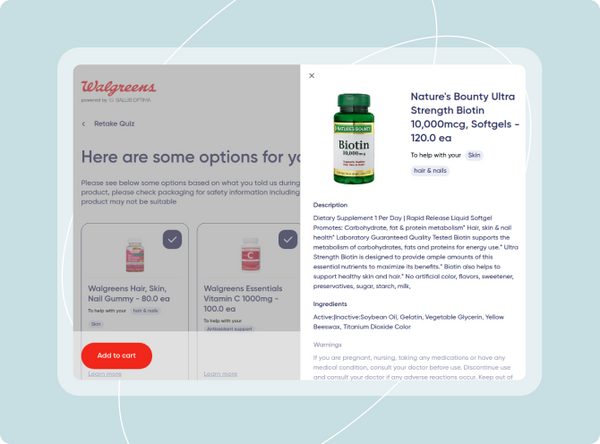
How to Develop a Remote Patient Monitoring App: The Ultimate Guide for 2022
 Jared Wild
Jared WildAs the world was on hold for the last two years, the need for solutions that would allow healthcare professionals to deliver their services remotely has become critical. The ubiquitous pandemic lockdowns have spurred the development of remote patient monitoring (RPM) solutions, expanding a once-niched market to a large industry with huge potential and rising competition.
In this article, we'll take you through the main types of RPM products, show you how to make a home monitoring app, and give some handy insights into the product logic as well as the potential development expenses.
5 Types of Remote Patient Monitoring Applications
IoT Medical Apps
When talking about such products, we need to consider not only the mobile application itself but a system that includes an app and medical sensors (or other IoT devices) connected to it.
So how does this system work? Let's say a patient has a Bluetooth glucometer. Once they measure sugar levels, the device automatically sends the data to the telehealth app that analyzes them and compiles a report explaining the obtained results to the patient.
Another example of such a system may be a smart pillbox that tracks medicine intake and sends notifications to the patient via a mobile app if they've missed taking medication. In addition to that, the app may also send the information about changes in the intake directly to the doctor.
Questionnaire Apps
Questionnaire applications are normally used for symptom tracking and offer users a series of questions relevant to their condition or disease. Once a user answers those questions, the app provides insights regarding the patient's current state or sends a report in real-time to a doctor — allowing the healthcare professional to analyze it and give a patient a relevant recommendation.
If you want to learn more about symptom checkers and similar features that developers integrate into their telehealth products, read our article: 15 Must-have Telehealth App Features for Doctors and Patients.
Communication Products
These apps allow patients to connect with a doctor and get recommendations online, without even visiting a hospital. Communication apps in telemedicine work in the same way as Skype and Zoom; however, they are fine-tuned to the needs of the healthcare industry and offer extended functionality (compared to the mass market products).
Here, aside from the basic video/audio/text chat features, such apps can also come with a bunch of extra features, like appointment management, digital queue, billing service, e-prescriptions, etc.
mHealth Apps
In general, the term mHealth comprises all the telemedicine products used for the delivery of healthcare services and health information. These can range from apps that track hydration levels to certified solutions that are used directly by healthcare institutions for improving the quality of medical care on-site*.
The range of tasks that mHealth products cover include: providing education, improving health awareness, collecting and analyzing medical data, supporting chronic disease management, etc.
* — More about such products, read in our article: How to Create a Telehealth Application: Process, Steps, Technologies.
Precision Medicine Solutions
This is the category that is a bit different from those mentioned above since precision medicine apps are used solely for research purposes.
Such products do not facilitate any communication between patients and doctors and are used to collect and analyze health data of a particular target group of people — all to provide healthcare professionals with insights into public health.
Precision medicine apps normally anonymize patients’ data; however, developers still need to get users’ consent on using their medical information for purposes beyond individual care.
How to Develop a Remote Monitoring App
Step 1. Identify the exact problem you'll be targeting
Every remote monitoring app development starts with market research and identification of the pain points of the audience that the app will try to mitigate. Even though this step might be obvious, think of it this way — you are entering a market that has a large number of products competing with each other there. Some of those apps may even utilize the same/similar functionality as your future app.
So, your goal is to precisely identify the problem of your target audience and develop a unique selling proposition that will show users 1) how your product would be able to help them and 2) how it will be different from the competition.

Step 2. Comply with industry guidelines & requirements
Given that the RPM apps gather and process sensitive information, it is extremely important for such products to be compliant with the legislative requirements set for the healthcare industry. Not only that, in the US if your RPM software fails to comply with industry standards, the organization that uses it may be charged with a penalty of $50,000.
Thus, it is important to ensure that your app complies with HIPAA requirements, FDA rules, ISO27001, and IEC 62304 security standards. Aside from that, depending on the geographical (country/region) or operational (type of medical facility) location, your product might be expected to also get some specific data security certificates.
Step 3. Come up with a user-centric UI/UX
When developing a remote patient monitoring software or an app, always keep in mind that users in the mass are not tech savvy, so providing them with clear and simple navigation should be among your main priorities.
Avoid overloading the interface with unnecessary information and elements. Try to minimize the cognitive burden as a whole by reducing to a minimum the number of actions that a user needs to do to complete a certain action.
Additionally, ensure that your RPM product can be accessed by the users with visual impairments. For this purpose, consider using big buttons and bright design elements in your UI (would also be helpful for elderly people).

Step 4. Develop an MVP
By developing an MVP (minimum viable product) first — instead of a fully-fledged product — you'll be able to validate your app idea on early adopters (first users) while keeping the budget spending at a minimum. The goal here is to build a remote monitoring app quickly and receive user feedback as soon as possible to understand whether your product has future potential or not.
This strategy is especially helpful for startups whose development resources are normally limited, and rolling out an MVP is the only way not to fail in a crowded market — according to Cbinsignts, 20% of startups get outcompeted right away. Plus, startups often use their MVPs to attract additional investments and scale their products further.
Step 5. Test and deploy
Before presenting your RPM product to the market, it's necessary to test it and ensure it is stable, safe, and doesn't crash, or have major bugs. The testing process includes several stages and verification procedures, the most common of which are:
- Functional testing — helps to ensure that the app works according to the set requirements (i.e. performs its expected functions).
- Usability testing — the app's interface gets verified to ensure the convenience of use and its correspondence to usability standards.
- UI testing — performed to ensure that the app's interface corresponds to the predefined technical specifications (screen resolutions, responsiveness of app elements, page orientation, etc).
- Compatibility testing — ensures that the app operates stably on different devices.
- Performance testing — сhecks the app's performance under different use scenarios and types of load.
Now, after the testing is done, you are ready to deploy your app to the App stores.
Step 6. Work on further updates
After your app goes live, you can start collecting users’ feedback and working on future updates, as well as enhancing the functionality of your product. This is an ongoing process that will need to be facilitated as long as your app stays on a market.
We recommend that you think of app maintenance in advance and make sure you have a health monitoring application development team at your disposal, capable of delivering application support services on an ongoing basis.

How to Create a Remote Monitoring App that Will Be a Success: Core Principles
Aside from the process of remote patient monitoring app building itself, it is also necessary to understand how this technology works, at least on the basic level, and know which components you need to keep an eye on during the remote monitoring mobile app development.
1. Data collection
The first thing you need to do is to decide which data your RPM app will be collecting and how. The type of health data can be weight, height, activity, blood pressure, heart rate, and so on. As for the sources of information, there are several ways your app can get it:
- Bluetooth/Wi-Fi — retrieve data from the wearables.
- Mobile platform kits — CareKit and HealthKit for iOS and GoogleFit for Android.
- Third-party vendors — give developers access to medical data pulled from in-home medical devices.
Іконку
2. Data integration
You also should think of how to transfer health data you get from the patient to a doctor. This is needed to make the ongoing delivery of medical care possible for patients. To make this happen, you need to connect your product to the EHR system of a hospital via secure API.
Іконку
3. Patient engagement
Even though the primary goal of your app is to ensure the continuous monitoring of a patient's health, the app design should not be overlooked. A great-looking app will encourage users to go back to it more often as well as increase the engagement level. For that to happen, consider adding visuals (like dashboards and charts) to your app.
Іконку
4. Patient-Doctor interaction
Obviously, if your app supports the interaction between a patient and doctor, it has to provide corresponding means of communication for both parties. Real-time chat, audio calls, and video service are among the most popular tools used in RPM products for this.
Іконку
5. Notifications
Integrating reminders and notifications are critical for telemedicine products. Unlike in other apps where these can be considered by users as something not so important, e-health notifications are commonly used to remind patients about upcoming appointments, or about their medicine intake. In RPM apps, notifications can also alert a user about sudden (or abnormal) changes in the vitals they track.
Іконку
6. Payment Gateway
The RPM app should be convenient for the users, so if it offers some paid functionality, patients should be able to pay for it without leaving the app. Consider adding a payment gateway to the app and make sure that patients get different payment options like credit cards, PayPal, Stripe, Apple Pay, etc.
Іконку
Costs of Remote Monitoring App Development
There are a lot of factors that need to be taken into account when planning remote monitoring mobile app development budgets. For one, the development costs heavily depend on project size, the number of features to introduce, and the type of development approach (in-house or outsource) that a startup chooses to follow.
If you consider outsourcing your project, then the location of a team would also play a huge role. For example, software development teams from the U.S. charge 2-3 times more than their Eastern European counterparts. That means working with programmers from the United States can double or even triple your development budget.
Considering all this, it's almost impossible to answer precisely how much app development would cost. For each specific project, the estimate gets calculated individually.
However, we can still talk in broad figures. The cost to develop a remote monitoring app (MVP version) can start from $20,000 and go up to $300,000. But let's keep in mind that this price range is still rough, meaning in some cases the price can be below $20,000, or even above $300,000. Especially if we're talking about making complex telehealth software from scratch with various integrations.
More information on app development pricing can be found here: How To Estimate Telemedicine App Development Cost.
Consider Lunka.tech Your Partner
The goal of our telemedicine app development services is to always deliver to our clients the best result possible at the budget they can afford. At Lunka.tech we have a proven track record of working on healthcare projects of different sizes and know all the do's and don'ts that startups need to follow while creating a remote monitoring app. So, take a look at some of the projects that we’ve worked on recently:
- Match Fit Pass — the app that our team developed for a client from Manchester, UK. The goal was to build an app that would allow users to book tickets for sporting events and also order PCR tests, all via a single platform.
- Bianu — a mobile app that was created to help women remain healthy during pregnancy. Bianu focuses on nutrition recommendations with the help of input data based on the current pregnancy trimester. The platform can come up with handy recommendations regarding nutrition elements and vitamins.
Final Thoughts
The number of telemedicine products that join the market increases day by day, and RPM apps are no exception. Not only do they help patients get extra care when they need it, but also allow doctors to improve the efficiency of their work and the quality of services they deliver.
Hopefully, now you have a better understanding of how to develop a remote monitoring mobile application. If you need more information on the subject or want to develop a remote patient monitoring app with an outsourced development team, contact us. We have the required expertise in the healthcare field and are ready to get your project off the ground!
FAQ
What are the benefits of RPM apps?
Remote patient monitoring solutions help improve the quality of healthcare services and let physicians treat more patients. They also give patients a sense of support and assure them that there's someone watching over their health on a regular basis. Additionally, RPM products give more opportunities for interaction thus increasing the satisfaction levels that users get when communicating with a healthcare provider.
What regulations do I need to follow when developing an RPM app?
The legislative requirements for an RPM product may vary depending on the state, country, or region where you want to make a remote monitoring app for. In general cases, though, when we speak of rules and requirements these include following HIPAA security standards, compliance with FDA requirements, and medical coding/billing rules.
What are the main types of remote patient monitoring devices?
There are dozens of different RPM devices on the market today. However, the most common are Bluetooth-powered blood pressure cuffs, scales, thermometers, glucometers, pulse oximeters, ECGs, digital stethoscopes, and various activity trackers.
How long does it take to build a health monitoring application?
The development of a basic version of a remote patient monitoring program may take between three and nine months. It all depends on the functionality, general scope of the work, and any additional requirements set for the project that may affect the process of the remote monitoring app making. If you want to get a more precise timeline estimate specifically for your app, please contact our managers.
